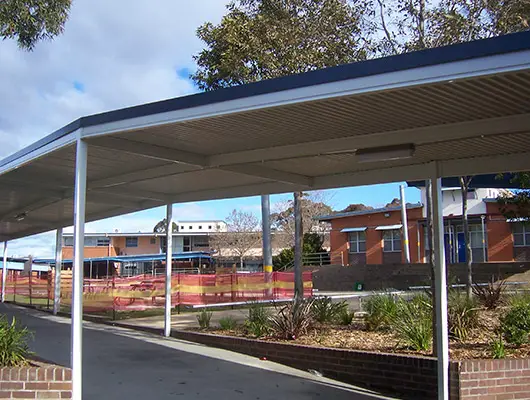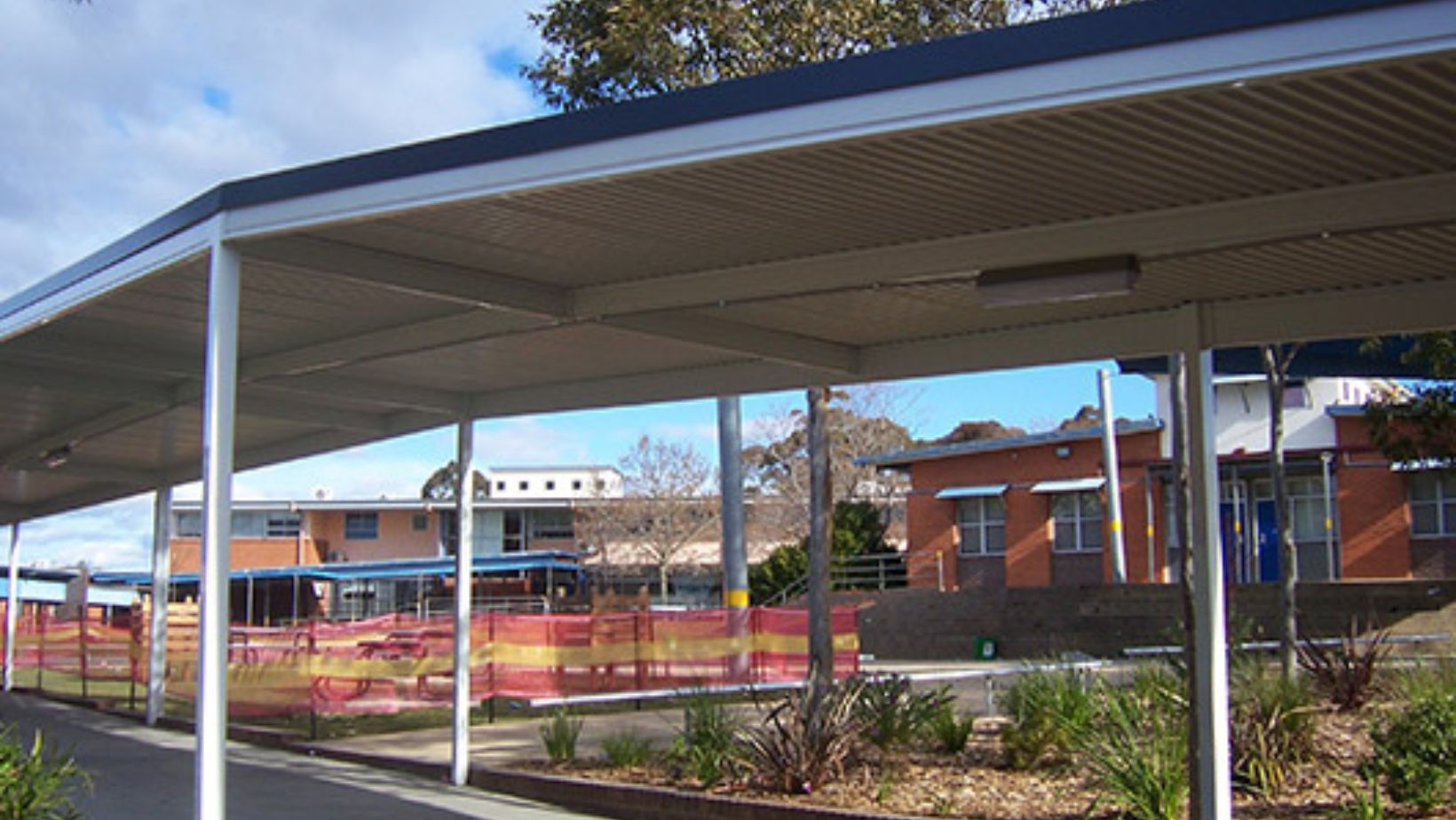
Image Source: https://stylemasterpatios.com.au/schools/covered-walkways/
So many important decisions have to be taken while installing roof walkways. The problem is that building owners and roof safety installation professionals are getting more and more creative with the design and functionality of roof walkways. However, no matter how stylish and designer they become, they will remain essential to any roofing structure. Their role will be to make the rooftop safer for people accessing it.
Constructing roof walkways is not easy, and you must consider several factors during installation. Additionally, these walkways come with many benefits that we will review today after considering the tips for getting good-quality roof walkway installation done.
CHOOSE THE RIGHT MATERIAL
During roof walkways installation, you must choose the most lightweight yet most durable material available. This becomes even more important if the roofing structure is fragile and has restricted load-bearing capacity. In this situation, you must choose a lightweight material that is robust enough to bear traffic's weight. Aluminium is considered the most preferred choice, as it has a very high strength-to-weight ratio and is enough to withstand the traffic easily.
DON'T FORGET TO CHECK THE LOAD-BEARING CAPACITY
The roof walkways solutions should come with good-quality load-bearing capacity, and this is something to calculate in advance. You must be sure that the design is AS-1657 compliant and that the structure is certified to Australian National Construction Codes.
The main points are mentioned in the rules and Australian Standards AS-1657-2018.
MAIN POINTS TO CONSIDER ARE –
- Must be a minimum of 600mm wide
- Must have a non-slip surface
- Cross slope cannot exceed 7°
- When cross slope exceeds 7° walkway must be levelled
- Guard railing must be installed if the roof slope exceeds 12° on the lower side
- When running inline with roof' slopes, cleats must be installed once it exceeds 10°
THE WALKWAY SHOULD PROVIDE A SAFE SURFACE
During roof walkways installation, you must ensure that the surface is designed with anti-slip qualities. These installations are integral to a safe environment when working on heights. There are multiple risks, and only correctly designed roof walkway systems can mitigate these risks and threats. The walking platform should be at least 600 mm wide and 13 millimetres thick. It should provide extended grips in both dry and wet conditions. Anti-slip features can be achieved easily by using a ribbed surface, serrated surface or a combination of both. Vendors of opening roof installations don't recommend timber-based walking surfaces, as water can make the surface slippery underfoot.
THE ROOF WALKWAYS SHOULD HAVE PROPER DRAINING
Water pooling is hazardous, especially for those working on heights and should not be present around and on roof walkways. These roof walkways should have sufficient drainage systems to prevent water from pooling completely. Vendors of opening roofs solutions recommend using a combination of crossbars and longitudinal bearers. Remember, the components provide suitable foot contact with the area without compromising on the draining capabilities of roof walkways.
ENHANCE SAFETY FURTHER WITH GUARDRAILS AND HANDRAILS
Guardrails and handrails installed on the roof walkways can improve safety significantly while working on the height. The fragile nature of your roofing system makes it a risky place to work without these guardrails and handrails. They provide adequate protection near the valley or the parapet. The material used in handrails should be suitable for different roof surfaces and pitches. It should be prefabricated and modular for easy and fast on-site installation.
DETERMINE INSTALLATION REQUIREMENTS
Property owners should also understand the speed and ease of installation of chosen roof walkways. Remember, the installation process can be complex and involve multiple stages, and you must avoid roof walkways that require hot works such as welding or drilling for assembling or installing. Your focus should be on those having fixing systems, and easy to handle by a team of installers.
WHAT BENEFITS TO EXPECT FROM ROOF WALKWAYS INSTALLATIONS
ENHANCED SAFETY
When roof walkways are installed to Australian standards 1657-2016, you ensure that the installation will offer complete safety on your building's rooftop. They are designed to prevent accidents and provide a safe passage to people accessing the roof.
IMPROVED ACCESS
Roof walkways should offer safe and efficient access to your commercial and residential roof. This is important for commercial buildings, as they require frequent maintenance and activities like HVAC unit installation and maintenance, plumbing and electrical installation and maintenance, etc. The roof walkways should make it easy to navigate the entire roof from one part to another without any risk or facing any obstacles.
PREVENT STRUCTURAL DAMAGES
These roof walkways solutions should be designed to install directly on the roof while providing even weight distribution. The design should not cause any structural damage due to concentrated weight in any specific area. Apart from this, adequate space should also be there to prevent the floor from issues like mould and mildew.
ENHANCED AESTHETICS
The rooftop is crucial in commercial buildings, and well-designed roof walkways will add significantly to its overall aesthetic appeal and appearance. They are designed to bring the most modern look and appeal to commercial buildings while complementing the architecture and design precisely. They are assumed as installations that add value to commercial properties and make them look grander, better and more premium.
MAINTENANCE BECOMES EASY
Rooftop maintenance is a challenging process step and this becomes even more challenging in sloppy terrains or if it has obstructions and obstacles. In this situation, roof walkways become very effective, as they make maintenance stress-free and the rooftop easy and safe to access. The team working on the roof will not have to worry about maintaining their balance or staying careful while moving. Instead, they just have to use the walkway and the durable platform provided to walk.
SAFETY FEATURES ARE THERE
Since roof walkways are designed to prevent accidents effectively, they have all the safety features that allow safe access to the rooftop area. They can be integrated with your roof's interior portions and constructed in a straight line to keep workers away from the edge. They also have extra railings for additional safety, comfort and security. They also prevent accidental falls and keep workers from stepping on risky areas accidentally. They also keep workers on the safer path by allowing a clear route to walk on. Features such as pitch-corrected surface make it more comfortable to maintain balance even if the ankle twists accidentally.





